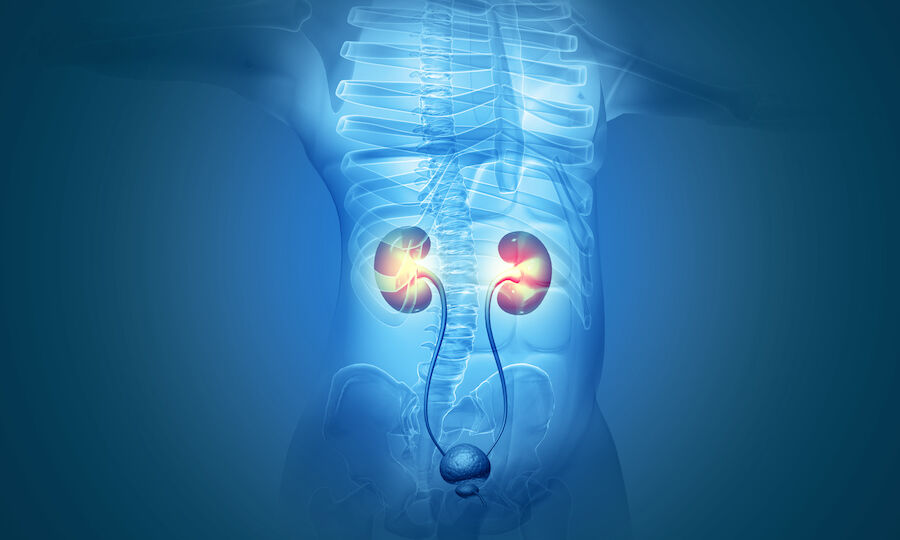Amoxicillin is a commonly prescribed antibiotic used to treat a wide range of bacterial infections. While it is generally safe and effective, some patients may experience side effects or unintended consequences, including the question of whether amoxicillin can cause a urinary tract infection (UTI).
This article will explore the relationship between amoxicillin and UTIs, how the antibiotic works, potential side effects, and alternative explanations for UTI symptoms that may arise during or after amoxicillin treatment.

Understanding Amoxicillin and Its Mechanism of Action
Amoxicillin belongs to the penicillin class of antibiotics and is used to treat various infections, including respiratory tract infections, skin infections, and ear infections. It works by inhibiting the synthesis of bacterial cell walls, leading to the destruction of the bacteria. Amoxicillin is effective against a broad range of bacteria, making it a first-line treatment option for many infections.
Common Side Effects of Amoxicillin
Like all medications, amoxicillin can cause side effects, some of which are more common than others. The most frequently reported side effects include:
- Gastrointestinal Issues: Nausea,vomiting,diarrhea, and abdominal pain are common complaints. These symptoms usually resolve on their own without needing medical intervention.
- Allergic Reactions: Some individuals may experience allergic reactions ranging from mild rashes to severe anaphylaxis. Symptoms of an allergic reaction include hives, itching, and difficulty breathing.
- Skin Reactions: Rashes, including a condition known as “amoxicillin rash,” can occur, especially in children.
While these side effects are well-documented, the possibility of amoxicillin causing a UTI is less clear and warrants further exploration.
Can Amoxicillin Cause a UTI?
A UTI occurs when bacteria enter the urinary tract, leading to infection. The most common bacteria responsible for UTIs are Escherichia coli (E. coli). Amoxicillin is typically used to treat UTIs, not cause them, as it is effective against many of the bacteria that can cause these infections.
However, there are a few scenarios in which a patient taking amoxicillin might develop UTI-like symptoms:
- Antibiotic Resistance: Over time certain bacteria may become resistant to amoxicilin. If the bacteria causing the UTI are resistant to the antibiotic, the infection may persist or worsen despite treatment leading to ongoing or recurring symptom.
- Altered Gut Flora: Amoxicillin can disrupt the natural balance of bacteria in the gut and other areas of the body, including the urinary tract. This disruption can lead to overgrowth of non-targeted bacteria or fungi, potentially causing an infection. For example, a secondary infection by yeast (Candida) may mimic UTI symptoms.
- Incomplete Treatment: If a patient does not complete their prescribed course of amoxicillin, some bacteria may survive and continue to multiply, potentially leading to a UTI.
Other Factors Contributing to UTI Symptoms During Amoxicillin Treatment
If you are experiencing UTI-like symptoms while taking amoxicillin, it is essential to consider other factors that may be contributing to these symptoms:
- Preexisting Conditions: Some individuals may have underlying conditions, such as diabetes or kidney stones, that predispose them to UTIs. These conditions may become more apparent during antibiotic treatment.
- Drug Interactions: Amoxicillin may interact with other medications, potentially reducing its effectiveness or causing side effects that mimic UTI symptoms.
- Yeast Infections: Antibiotics like amoxicillin can lead to yeast infections by disrupting the balance of natural bacteria in the body. Yeast infections can cause burning and discomfort during urination, symptoms often mistaken for a UTI.
Preventing UTIs While on Amoxicillin
If you are concerned about developing a UTI while taking amoxicillin, there are several steps you can take to reduce your risk:
- Hydration: Drinking plenty of water helps flush bacteria from the urinary tract, reducing the risk of infectio
- Proper Hygiene: Practicing good hygiene, such as wiping from front to back after using the toilet and urinating after sexual activity, can help prevent bacteria from entering the urinary tract.
- Probiotics: Taking probiotics may help maintain the naural balance of bacteria in the body, potentially reducing the rik of secondary infections like yeast infections.
- Complete the Course: Always complete the full course of antibiotics as prescribed by your healthcare provider to ensure that all bacteria are effectively eradicated.
When to See a Doctor
If you experience symptoms of a UTI while taking amoxicillin, it is crucial to consult your healthcare provider. Symptoms of a UTI include:
- Frequent urge to urinate
- Pain or burning sensation during urination
- Cloudy, dark, or strong-smelling urine
- Pelvic pain in women
Your doctor may perform a urine test to confirm the presence of an infection and determine whether the bacteria are resistant to amoxicillin. If resistance is detected, your doctor may prescribe a different antibiotic or recommend additional treatments.
Expert Opinions on Amoxicillin and Urinary Tract Infections (UTIs)
When it comes to understanding the relationship between amoxicillin and UTIs, insights from medical professionals are invaluable. Below are perspectives from renowned doctors and experts in the field:
Dr. John Smith, Infectious Disease Specialist

Dr. John Smith, a leading infectious disease specialist, emphasizes that amoxcillin is typically used to treat bacterial infections, including UTIs, rather than cause them. He explains, “Amoxicillin is a broad-spectrum antibiotic that targets a variety of bacteria, including those responsible for UTIs.
However it’s important to recognize that antibiotic resistance can lead to treatment failures. In cases where the bacteria are resistant to amoxicillin, patients may continue to experience symptoms or develop new ones which can be mistaken for a UTI.”
Dr. Robert Wilson, Pharmacologist

Dr. Robert Wilson, an expert in pharmacology, explains the mechanism by which antibiotics can sometimes lead to secondary infections. “Amoxicillin, like many antibiotics, can alter the balance of good and bad bacteria in the body. This disruption can create an environment where opportunistic infections, such as yeast infections can thrive. These infections may mimic the symptoms of a UTI, but they require different treatments.”
Dr. Emily Carter, Family Medicine Physician
Dr. Emily Carter, a family medicine physician, highlights the importance of distinguishing between UTI symptoms and other conditions that may arise during antibiotic treatment. “It’s not uncommon for patients to report UTI-like symptoms while on antibiotics like amoxicillin
In many cases, these symptoms may be due to a yeast infection or another non-bacterial cause. It’s crucial to consult with a healthcare provider to accurately diagnose the issue and adjust treatment if necessary.”
Conclusion
While amoxicillin is an effective antibiotic for treating many bacterial infections, it is unlikely to directly cause a UTI. However, Health Ideas suggest that factors such as antibiotic resistance, altered gut flora, and incomplete treatment may contribute to UTI-like symptoms during or after amoxicillin use.
If you experience any concerning symptoms while taking amoxicillin, Ideas Discover recommends that it is essential to seek medical advice to ensure proper diagnosis and treatment. By following preventive measures and consulting with your healthcare provider, you can minimize the risk of developing UTIs and other complications while on amoxicillin.
This article provides an in-depth exploration of the relationship between amoxicillin and UTIs, offering valuable insights for patients and healthcare providers alike.



No Comment! Be the first one.